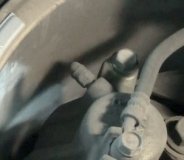Saturday, May 23rd, 2020 AT 3:00 PM
I am out to see if I can seek some help/answers as to why I cannot seem to restore brake ability/pressure to the system on my car after having to replace the brake line going to the rear of the vehicle. I have bled all 4 wheels as I normally would, the rear drivers side wheel seems to have pressure that comes and goes. Acts as if it has air, bleed the system and the pedal still goes to the floor. The brake light was on, after the first try of the above I thought I had air trapped in the ABS module so I bought an expensive scan tool to allow me to release the abs module to let fluid pump through the system, attempted to bleed again and still nothing. Help please!


